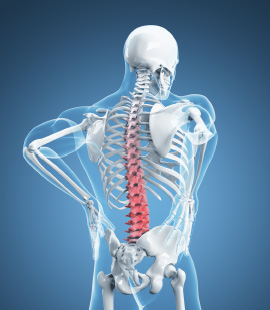Treatments for Lower Back Pain
Causes of Lower Back Pain
Strains and sprains: Back strains and sprains are the most common cause of back pain. You can injure muscles, tendons, or ligaments by lifting something too heavy or not lifting safely. Some people strain their back by sneezing, coughing, twisting, or bending over.
Fractures: The bones in the spine can break during an accident, like a car crash or a fall. Certain conditions (such as spondylolysis or osteoporosis) increase the risk of fractures.
Disk problems: Disks cushion the vertebrae (small spinal bones). Disks can bulge from their position in the spine and press on a nerve. They can also tear (herniated disk). With age, disks can get flatter and offer less protection (degenerative disk disease).
Structural problems: A condition called spinal stenosis happens when the spinal column is too narrow for the spinal cord. Something pinching the spinal cord can cause severe sciatic nerve pain and lower back pain. Scoliosis (curvature of the spine) can lead to pain, stiffness, and difficulty moving.
Arthritis: Osteoarthritis is the most common type of arthritis to cause lower back pain. Ankylosing spondylitis causes lower back pain, inflammation, and stiffness in the spine.
Disease: Spine tumors, infections, and several types of cancer can cause back pain. Other conditions can cause back pain, too. These include kidney stones and abdominal aortic aneurysms.
Spondylolisthesis: This condition causes the vertebrae in the spine to slip out of place. Spondylolisthesis leads to low back pain and often leg pain as well.

Treatments for Lower Back Pain
Rest, ice, and over-the-counter pain relievers: resolve most cases of acute low back pain injury. Resuming activity as soon as it is safe to do so increases blood flow to the area and helps you heal.
